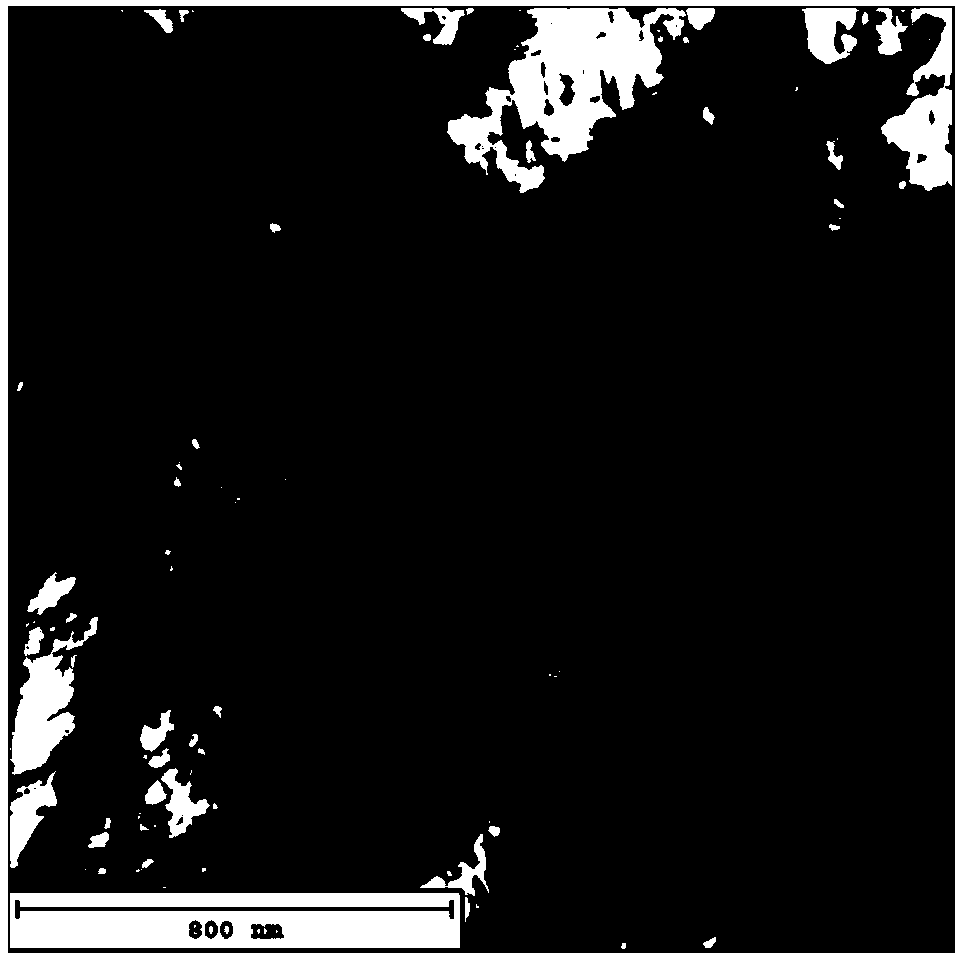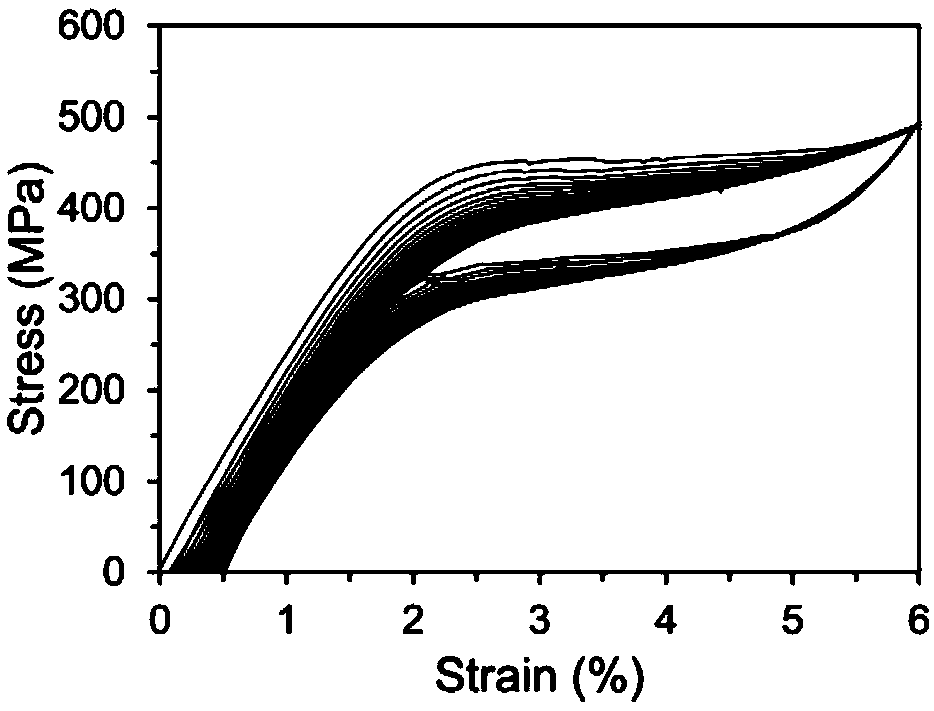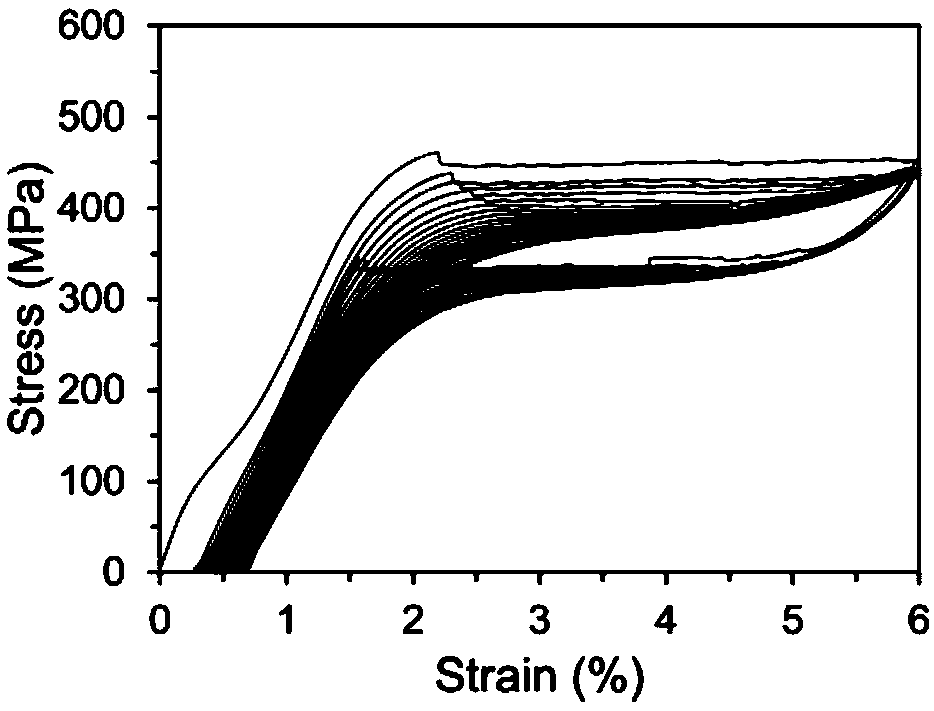Method for improving function stability of nickel-titanium shape memory alloy
A technology of memory alloy and stability, which is applied in the field of nickel-titanium shape memory alloy, can solve problems such as the insignificant strength effect of the nickel-titanium shape memory alloy matrix, difficulty in handling nickel-titanium alloy components, and unsuitable nickel-titanium alloy components, etc., to achieve improvement Functional stability, improvement of matrix strength, and effect of improving functional stability
- Summary
- Abstract
- Description
- Claims
- Application Information
AI Technical Summary
Problems solved by technology
Method used
Image
Examples
Embodiment 1
[0037] A method for improving the functional stability of a nickel-titanium shape memory alloy, comprising the steps of: first, stretching and deforming the nickel-titanium shape memory alloy to 9.5% at room temperature, then unloading, and repeating the above process 10 times, the nickel-titanium shape memory alloy Introducing dislocation defects; then aging for 48 hours under the condition of 250° C., introducing nanometer two-phase particles into the nickel-titanium shape memory alloy to obtain.
[0038] The atomic percentage of nickel in the nickel-titanium shape memory alloy used in this embodiment is 50.8 at.%.
Embodiment 2
[0040] A method for improving the functional stability of a nickel-titanium shape memory alloy, comprising the following steps: first, keeping the nickel-titanium shape memory alloy in a water bath at 100° C. for 5 minutes, then putting it into liquid nitrogen for 5 minutes, and then putting it into the Keep warm in a water bath at 100°C for 5 minutes, repeat the above process 20 times, and introduce dislocation defects into the nickel-titanium shape memory alloy; then age at 250°C for 48 hours, and introduce nano-secondary phase particles into the nickel-titanium shape memory alloy, that is, .
[0041] The atomic percentage of nickel in the nickel-titanium shape memory alloy used in this embodiment is 50.8 at.%.
Embodiment 3
[0043] A method for improving the functional stability of a nickel-titanium shape memory alloy, comprising the following steps: first, keeping the nickel-titanium shape memory alloy in a water bath at 100° C. for 5 minutes, then putting it into liquid nitrogen for 5 minutes, and then putting it into the Keep warm in a water bath at 100°C for 5 minutes, repeat the above process 200 times, and introduce dislocation defects into the nickel-titanium shape memory alloy; then age at 150°C for 500 hours, and introduce nanometer two-phase particles into the nickel-titanium shape memory alloy. .
[0044] The atomic percentage of nickel in the nickel-titanium shape memory alloy used in this embodiment is 50 at.%.
PUM
 Login to View More
Login to View More Abstract
Description
Claims
Application Information
 Login to View More
Login to View More - R&D
- Intellectual Property
- Life Sciences
- Materials
- Tech Scout
- Unparalleled Data Quality
- Higher Quality Content
- 60% Fewer Hallucinations
Browse by: Latest US Patents, China's latest patents, Technical Efficacy Thesaurus, Application Domain, Technology Topic, Popular Technical Reports.
© 2025 PatSnap. All rights reserved.Legal|Privacy policy|Modern Slavery Act Transparency Statement|Sitemap|About US| Contact US: help@patsnap.com



